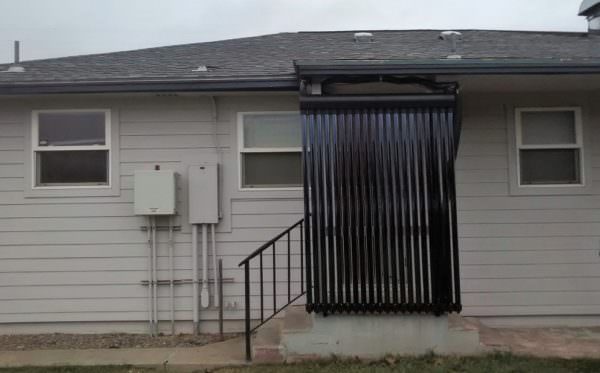Solar water was hot in the 1980s, but due to the poor performance of some of those early systems, it faded into relative obscurity. Nobody wanted to deal with scalding water on hot days and cold showers at night.
Water heating accounts for 17 percent of a typical home’s energy use, so it’s a ripe target for savings. The mainstream water-heating conversation shifted to tank versus tankless. But engineers continued to work on solar technology. Today, solar hot water systems are very different from those initial, unreliable systems.

Splashy Re-Debut
In May 2018, the Genesee Park net-zero home made a splash as the first Built Green net-zero house in the Seattle area. The Dwell Development design-build project boasted many envelope-pushing energy-efficiency features. Among more obvious strategies, the home included a custom solar hot water system by Silk Road Environmental, a solar thermal solutions company based in Washington state.

The Big Difference
Water-based solar water heating systems still exist. Tempering valves have made them better at maintaining a constant water temperature throughout the house. But heating water directly is not always the best option. The state of the art in solar water heating is thermal fluid. The rooftop panels on the Genesee Park net-zero home are filled with a nontoxic thermal gel instead of water. The silicone-based fluid can reach 700 degrees Fahrenheit before overheating and won’t freeze until it reaches -50 degrees.
The passive system has no moving parts, so failures are rare and maintenance is minimal. The system uses nested vacuum-sealed tubes. The innermost tube is filled with thermal fluid, which absorbs heat from the sun assisted by ultraviolet-sensitive coatings and metal tubing. When the fluid boils, vapor rises up the pipe, transferring heat to cold water, a heat manifold, or even air. Then the fluid condenses back down the tube to reheat.
Panels containing the tubes can be mounted anywhere that receives enough sunlight — on rooftops, walls, or the ground.

Cost and Benefit
Like solar electricity, every solar hot water project is custom designed for the building, and costs can vary widely. Cost factors include the size and specific needs of the system, and whether you have the system installed for you or do it yourself.
Ray Lam, president of Silk Road Environmental, says he doesn’t like to talk about return on investment. “When you choose to buy a nicer car, you don’t do it because of ROI. You do it because it’s a better product and the technology or aesthetics appeal to you,” says Lam.
Lam does keep the costs as low as possible. A typical Silk Road installation runs from $3,200 to $4,500. Also, like solar electricity, there are tax benefits to installing a solar thermal system. For environmentally-minded homeowners, eliminating nearly one-fifth of your home’s energy use with one design decision is a fantastic return regardless of financial considerations.









How Green Is Your Contraceptive?